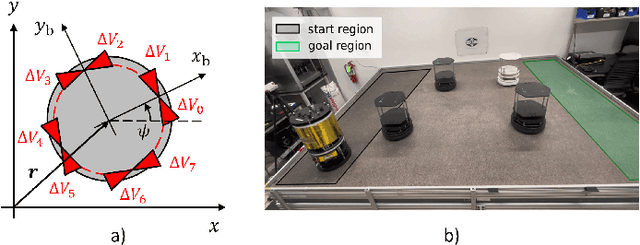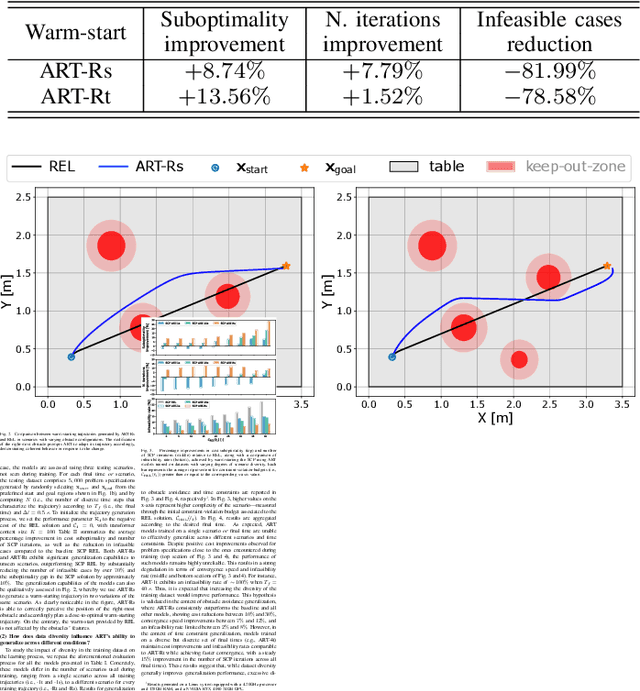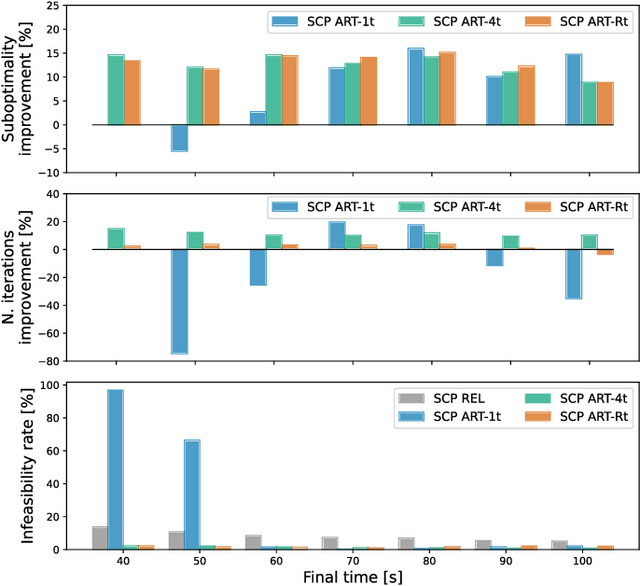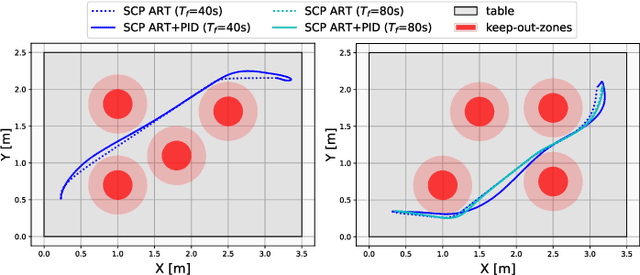Daniele Gammelli
Robo-taxi Fleet Coordination at Scale via Reinforcement Learning
Apr 09, 2025Abstract:Fleets of robo-taxis offering on-demand transportation services, commonly known as Autonomous Mobility-on-Demand (AMoD) systems, hold significant promise for societal benefits, such as reducing pollution, energy consumption, and urban congestion. However, orchestrating these systems at scale remains a critical challenge, with existing coordination algorithms often failing to exploit the systems' full potential. This work introduces a novel decision-making framework that unites mathematical modeling with data-driven techniques. In particular, we present the AMoD coordination problem through the lens of reinforcement learning and propose a graph network-based framework that exploits the main strengths of graph representation learning, reinforcement learning, and classical operations research tools. Extensive evaluations across diverse simulation fidelities and scenarios demonstrate the flexibility of our approach, achieving superior system performance, computational efficiency, and generalizability compared to prior methods. Finally, motivated by the need to democratize research efforts in this area, we release publicly available benchmarks, datasets, and simulators for network-level coordination alongside an open-source codebase designed to provide accessible simulation platforms and establish a standardized validation process for comparing methodologies. Code available at: https://github.com/StanfordASL/RL4AMOD
Transformer-based Model Predictive Control: Trajectory Optimization via Sequence Modeling
Oct 31, 2024



Abstract:Model predictive control (MPC) has established itself as the primary methodology for constrained control, enabling general-purpose robot autonomy in diverse real-world scenarios. However, for most problems of interest, MPC relies on the recursive solution of highly non-convex trajectory optimization problems, leading to high computational complexity and strong dependency on initialization. In this work, we present a unified framework to combine the main strengths of optimization-based and learning-based methods for MPC. Our approach entails embedding high-capacity, transformer-based neural network models within the optimization process for trajectory generation, whereby the transformer provides a near-optimal initial guess, or target plan, to a non-convex optimization problem. Our experiments, performed in simulation and the real world onboard a free flyer platform, demonstrate the capabilities of our framework to improve MPC convergence and runtime. Compared to purely optimization-based approaches, results show that our approach can improve trajectory generation performance by up to 75%, reduce the number of solver iterations by up to 45%, and improve overall MPC runtime by 7x without loss in performance.
* 8 pages, 7 figures. Datasets, videos and code available at: https://transformermpc.github.io
Generalizable Spacecraft Trajectory Generation via Multimodal Learning with Transformers
Oct 15, 2024



Abstract:Effective trajectory generation is essential for reliable on-board spacecraft autonomy. Among other approaches, learning-based warm-starting represents an appealing paradigm for solving the trajectory generation problem, effectively combining the benefits of optimization- and data-driven methods. Current approaches for learning-based trajectory generation often focus on fixed, single-scenario environments, where key scene characteristics, such as obstacle positions or final-time requirements, remain constant across problem instances. However, practical trajectory generation requires the scenario to be frequently reconfigured, making the single-scenario approach a potentially impractical solution. To address this challenge, we present a novel trajectory generation framework that generalizes across diverse problem configurations, by leveraging high-capacity transformer neural networks capable of learning from multimodal data sources. Specifically, our approach integrates transformer-based neural network models into the trajectory optimization process, encoding both scene-level information (e.g., obstacle locations, initial and goal states) and trajectory-level constraints (e.g., time bounds, fuel consumption targets) via multimodal representations. The transformer network then generates near-optimal initial guesses for non-convex optimization problems, significantly enhancing convergence speed and performance. The framework is validated through extensive simulations and real-world experiments on a free-flyer platform, achieving up to 30% cost improvement and 80% reduction in infeasible cases with respect to traditional approaches, and demonstrating robust generalization across diverse scenario variations.
Offline Hierarchical Reinforcement Learning via Inverse Optimization
Oct 10, 2024Abstract:Hierarchical policies enable strong performance in many sequential decision-making problems, such as those with high-dimensional action spaces, those requiring long-horizon planning, and settings with sparse rewards. However, learning hierarchical policies from static offline datasets presents a significant challenge. Crucially, actions taken by higher-level policies may not be directly observable within hierarchical controllers, and the offline dataset might have been generated using a different policy structure, hindering the use of standard offline learning algorithms. In this work, we propose OHIO: a framework for offline reinforcement learning (RL) of hierarchical policies. Our framework leverages knowledge of the policy structure to solve the inverse problem, recovering the unobservable high-level actions that likely generated the observed data under our hierarchical policy. This approach constructs a dataset suitable for off-the-shelf offline training. We demonstrate our framework on robotic and network optimization problems and show that it substantially outperforms end-to-end RL methods and improves robustness. We investigate a variety of instantiations of our framework, both in direct deployment of policies trained offline and when online fine-tuning is performed.
Towards Robust Spacecraft Trajectory Optimization via Transformers
Oct 08, 2024Abstract:Future multi-spacecraft missions require robust autonomous trajectory optimization capabilities to ensure safe and efficient rendezvous operations. This capability hinges on solving non-convex optimal control problems in real time, although traditional iterative methods such as sequential convex programming impose significant computational challenges. To mitigate this burden, the Autonomous Rendezvous Transformer introduced a generative model trained to provide near-optimal initial guesses. This approach provides convergence to better local optima (e.g., fuel optimality), improves feasibility rates, and results in faster convergence speed of optimization algorithms through warm-starting. This work extends the capabilities of ART to address robust chance-constrained optimal control problems. Specifically, ART is applied to challenging rendezvous scenarios in Low Earth Orbit (LEO), ensuring fault-tolerant behavior under uncertainty. Through extensive experimentation, the proposed warm-starting strategy is shown to consistently produce high-quality reference trajectories, achieving up to 30% cost improvement and 50% reduction in infeasible cases compared to conventional methods, demonstrating robust performance across multiple state representations. Additionally, a post hoc evaluation framework is proposed to assess the quality of generated trajectories and mitigate runtime failures, marking an initial step toward the reliable deployment of AI-driven solutions in safety-critical autonomous systems such as spacecraft.
Adapting a Foundation Model for Space-based Tasks
Aug 12, 2024



Abstract:Foundation models, e.g., large language models, possess attributes of intelligence which offer promise to endow a robot with the contextual understanding necessary to navigate complex, unstructured tasks in the wild. In the future of space robotics, we see three core challenges which motivate the use of a foundation model adapted to space-based applications: 1) Scalability of ground-in-the-loop operations; 2) Generalizing prior knowledge to novel environments; and 3) Multi-modality in tasks and sensor data. Therefore, as a first-step towards building a foundation model for space-based applications, we automatically label the AI4Mars dataset to curate a language annotated dataset of visual-question-answer tuples. We fine-tune a pretrained LLaVA checkpoint on this dataset to endow a vision-language model with the ability to perform spatial reasoning and navigation on Mars' surface. In this work, we demonstrate that 1) existing vision-language models are deficient visual reasoners in space-based applications, and 2) fine-tuning a vision-language model on extraterrestrial data significantly improves the quality of responses even with a limited training dataset of only a few thousand samples.
Real-time Control of Electric Autonomous Mobility-on-Demand Systems via Graph Reinforcement Learning
Nov 09, 2023



Abstract:Operators of Electric Autonomous Mobility-on-Demand (E-AMoD) fleets need to make several real-time decisions such as matching available cars to ride requests, rebalancing idle cars to areas of high demand, and charging vehicles to ensure sufficient range. While this problem can be posed as a linear program that optimizes flows over a space-charge-time graph, the size of the resulting optimization problem does not allow for real-time implementation in realistic settings. In this work, we present the E-AMoD control problem through the lens of reinforcement learning and propose a graph network-based framework to achieve drastically improved scalability and superior performance over heuristics. Specifically, we adopt a bi-level formulation where we (1) leverage a graph network-based RL agent to specify a desired next state in the space-charge graph, and (2) solve more tractable linear programs to best achieve the desired state while ensuring feasibility. Experiments using real-world data from San Francisco and New York City show that our approach achieves up to 89% of the profits of the theoretically-optimal solution while achieving more than a 100x speedup in computational time. Furthermore, our approach outperforms the best domain-specific heuristics with comparable runtimes, with an increase in profits by up to 3x. Finally, we highlight promising zero-shot transfer capabilities of our learned policy on tasks such as inter-city generalization and service area expansion, thus showing the utility, scalability, and flexibility of our framework.
Transformers for Trajectory Optimization with Application to Spacecraft Rendezvous
Oct 20, 2023Abstract:Reliable and efficient trajectory optimization methods are a fundamental need for autonomous dynamical systems, effectively enabling applications including rocket landing, hypersonic reentry, spacecraft rendezvous, and docking. Within such safety-critical application areas, the complexity of the emerging trajectory optimization problems has motivated the application of AI-based techniques to enhance the performance of traditional approaches. However, current AI-based methods either attempt to fully replace traditional control algorithms, thus lacking constraint satisfaction guarantees and incurring in expensive simulation, or aim to solely imitate the behavior of traditional methods via supervised learning. To address these limitations, this paper proposes the Autonomous Rendezvous Transformer (ART) and assesses the capability of modern generative models to solve complex trajectory optimization problems, both from a forecasting and control standpoint. Specifically, this work assesses the capabilities of Transformers to (i) learn near-optimal policies from previously collected data, and (ii) warm-start a sequential optimizer for the solution of non-convex optimal control problems, thus guaranteeing hard constraint satisfaction. From a forecasting perspective, results highlight how ART outperforms other learning-based architectures at predicting known fuel-optimal trajectories. From a control perspective, empirical analyses show how policies learned through Transformers are able to generate near-optimal warm-starts, achieving trajectories that are (i) more fuel-efficient, (ii) obtained in fewer sequential optimizer iterations, and (iii) computed with an overall runtime comparable to benchmarks based on convex optimization.
Graph Reinforcement Learning for Network Control via Bi-Level Optimization
May 16, 2023Abstract:Optimization problems over dynamic networks have been extensively studied and widely used in the past decades to formulate numerous real-world problems. However, (1) traditional optimization-based approaches do not scale to large networks, and (2) the design of good heuristics or approximation algorithms often requires significant manual trial-and-error. In this work, we argue that data-driven strategies can automate this process and learn efficient algorithms without compromising optimality. To do so, we present network control problems through the lens of reinforcement learning and propose a graph network-based framework to handle a broad class of problems. Instead of naively computing actions over high-dimensional graph elements, e.g., edges, we propose a bi-level formulation where we (1) specify a desired next state via RL, and (2) solve a convex program to best achieve it, leading to drastically improved scalability and performance. We further highlight a collection of desirable features to system designers, investigate design decisions, and present experiments on real-world control problems showing the utility, scalability, and flexibility of our framework.
Learning to Control Autonomous Fleets from Observation via Offline Reinforcement Learning
Feb 28, 2023Abstract:Autonomous Mobility-on-Demand (AMoD) systems are a rapidly evolving mode of transportation in which a centrally coordinated fleet of self-driving vehicles dynamically serves travel requests. The control of these systems is typically formulated as a large network optimization problem, and reinforcement learning (RL) has recently emerged as a promising approach to solve the open challenges in this space. However, current RL-based approaches exclusively focus on learning from online data, fundamentally ignoring the per-sample-cost of interactions within real-world transportation systems. To address these limitations, we propose to formalize the control of AMoD systems through the lens of offline reinforcement learning and learn effective control strategies via solely offline data, thus readily available to current mobility operators. We further investigate design decisions and provide experiments on real-world mobility systems showing how offline learning allows to recover AMoD control policies that (i) exhibit performance on par with online methods, (ii) drastically improve data efficiency, and (iii) completely eliminate the need for complex simulated environments. Crucially, this paper demonstrates that offline reinforcement learning is a promising paradigm for the application of RL-based solutions within economically-critical systems, such as mobility systems.
 Add to Chrome
Add to Chrome Add to Firefox
Add to Firefox Add to Edge
Add to Edge